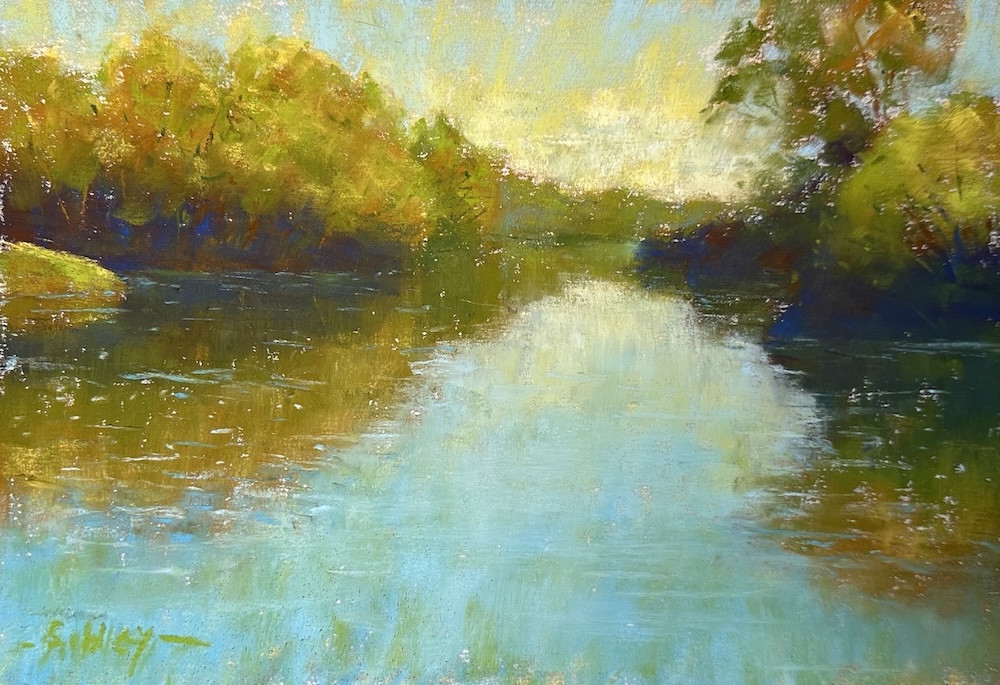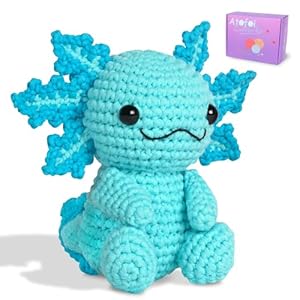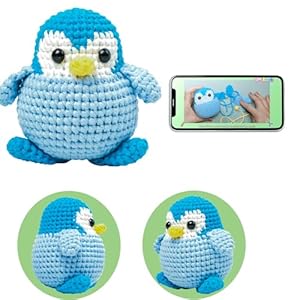
This month in the IGNITE! Art-Making Membership has been all about diving deep into how to paint reflections on water. If we observe carefully, we can paint what’s there and reflections will look accurate. It is, however, good to know a few guidelines. I’ll list some of these below this demo I did for the membership, illustrating these ideas.
Let’s jump in!
I chose a reference photo I took in March of the Macquarie River in Tasmania. I’d finished teaching an Art Retreat and had a few days to sightsee along the north coast of the island. I wished I’d had time to sit and paint on the spot!

When it came to paint, I decided to crop in as I was most interested in the area that’s closer to where the river disappears in the distance.

I made a thumbnail (of course!). As you can see, I drew a line down on the left side of the study as I felt there was too much “sameness” on the left side that didn’t enhance the whole and would be kinda boring.

I was taken by the warm blues and greens of the scene. On a scrap of UART paper (3 x 1 in), I got out some pastels from my Unison Colour set and played around. I started with some yellows and built up on top. I liked what I saw!

I decided to go ahead and repeat the same colour sequence. So after drawing up the piece on UART 500 paper in vine charcoal, I created a similar warm underpainting of yellows.
Remember, the hue of brilliant yellow will always be on the light end of the value scale. So to get a mid-value yellow and a dark yellow (an oxymoron?!), I resorted to an ochre colour and a warm brown.

I then started to add the next layer – a pale blue-green, two mid-value warm greens, and dark blue.

And then I got to work, building the piece, working on the reflections. I only added a couple more colours along the way (you’ll see them at the end).

Let’s look at a few guiding principles when it comes to painting reflections on water.
- Reflections are related to you and where you’re looking at them (unlike cast shadows which don’t have a relationship with you!)
- Reflections directly mirror what’s above – draw a line straight down and you’ll echo the subject
- Darks tend to slightly lighten in the reflection
- Lights tend to slightly darken in the reflection
- Colours tend towards a single hue
- Colours are usually less intense in reflections
- Edges are softer/broken up
- Details aren’t obvious
- The colour of the water does come into play. The more opaque it is, the more it will affect the colour and value – and the more monochromatic the reflections will be.
I kept these in mind as I painted.
I felt that I was coming close to the end and signed the piece. (I think I need to fix the signature – seems I doubled up the lines. In real life, it doesn’t look quite so obvious!)

But then, a few small things started to bug me and I made some tweaks. Here’s the piece as it now stands. (Can you see the small changes I made?)

And here it is in black and white.

Here are the 11 Unison Colour pastels I used, lined up in their value areas of dark, middle, and light.

I’m now looking forward to digging into and painting from the myriad of photos I have with reflections!
This painting is the one I painted to demo this month’s theme of reflections on water. In IGNITE! You’ll see me paint it in real time and talk over what I’m doing and why. Want this and more? Join us in IGNITE!
Do you like painting reflections on water? What problems do you run into? I’d love to know so be sure to leave a comment!
Until next time!
~ Gail
PS. It’s very easy to fiddle faddle a painting to death…..
Trending Products











